 |
 |
 |
| |
All-Cause Mortality 3 to 15 Times Higher After HCV SVR Than in General Population
|
| |
| |
EASL International Liver Congress 2022, London, June 22-26, 2022
Mark Mascolini
After sustained virologic response (SVR) to an interferon-free direct-acting antiviral (DAA) regimen, 20,000 people with cured HCV infection still had 3 to 15 times higher all-cause mortality, according to a retrospective analysis in Scotland, England, and British Columbia (BC), Canada. Regression analysis linked younger age, drug use, alcohol use, and comorbidities to excess mortality after SVR in people with HCV.
Researchers at Glasgow Caledonian University and collaborators at other centers reminded EASL attendees that, despite vastly improved survival with DAA regimens for HCV, factors driving this change and how post-SVR mortality compares with that of the general population remain poorly understood. To get a better handle on mortality differences and drivers in the current HCV treatment era, this research team analyzed data on HCV patients at least 18 years old who attained SVR with an interferon-free DAA regimen from 2014 through 2018/2019. They divided the study group into three subgroups: no cirrhosis (in Scotland and BC only), compensated cirrhosis, and end-stage liver disease (ESLD).
The investigators reckoned age-standardized mortality for people with SVR to account for differences in age and sex between the three cohorts and disease-stage groups. They figured standardized mortality ratios to compare death rates in people with SVR and the general population. They also determined the proportion of excess deaths in the SVR group attributable to liver cancer, noncancer liver disease, and drug-related causes. The research team used Poisson regression to pinpoint baseline factors linked to excess mortality in people with SVR.
Of the 20,031 SVR attainers analyzed, 11,942 lived in BC, 5972 in Scotland, and 2117 in England. Three quarters of people in England and two thirds in Scotland and BC were men. Average age ranged from 46.3 in Scotland to 56.7 in BC. During an average 2.2 to 3.9 years of follow-up (depending on cohort), 1402 people (7%) died. Age-standardized mortality rose as liver disease worsened, ranging from 12 to 23 deaths per 1000 person-years in the no-cirrhosis group, to 27 to 38 deaths per 1000 person-years in the compensated cirrhosis group, and to 62 to 118 deaths per 1000 person-years in the ESLD group.
All-cause mortality also rose consistently with worsening liver disease compared with the general population: standardized mortality ratio 3.4 to 3.5 times higher in the no-cirrhosis group than in the general population, 4.2 to 5.9 times higher in the compensated-cirrhosis group than in the general population, and 8.7 to 15.3 times higher in the ESLD group than in the general population. All differences between the HCV groups and the general population reached statistical significance.
Country by country, all-cause standardized mortality ratios (comparing mortality in SVR groups with the general population) and 95% confidence intervals were as follows:
No cirrhosis, Scotland: 3.47 (2.86 to 4.18)
No cirrhosis, BC: 3.40 (3.11 to 3.71)
Compensated cirrhosis, Scotland: 5.93 (4.92 to 7.07)
Compensated cirrhosis, England: 4.16 (3.50 to 4.93)
Compensated cirrhosis, BC: 4.53 (3.72 to 5.51)
ESLD, Scotland: 8.69 (6.12 to 11.89)
ESLD, England: 11.28 (9.78 to 13.01)
ESLD, BC: 15.25 (13.39 to 17.36)
For people with SVR and no cirrhosis, illicit drug use caused most excess deaths (77% in Scotland, 41% in BC) compared with the general population. For people with SVR and compensated cirrhosis, liver-related causes accounted for the greatest share of excess deaths (30% to 95%).
Poisson regression-determined factors associated with excess mortality with HCV in study subgroups were younger age for compensated cirrhosis and ESLD in England, younger age for no cirrhosis, compensated cirrhosis, and ESLD in Scotland, and younger age for no cirrhosis and ESLD in BC; alcohol use for compensated cirrhosis and ESLD in England, alcohol use for compensated cirrhosis in Scotland, and alcohol use for no cirrhosis and compensated cirrhosis in BC; drug use for every subgroup except compensated cirrhosis in BC; and comorbidities for every subgroup except ESLD in England and ESLD in Scotland. Male sex was associated with lower risk of excess mortality with HCV for ESLD in England, ESLD in Scotland, and no cirrhosis in BC.
The researchers noted that the hefty excess mortality risk in people with HCV compared with the general population varies greatly with disease severity at the time of HCV cure. But even HCV-infected people with no cirrhosis had 3.5-fold higher all-cause mortality compared with the general population. The investigators stressed two drivers of excess mortality in this study population-drug-related mortality in people without cirrhosis, and liver-related causes including hepatocellular carcinoma in people with cirrhosis.
Reference
1. Hamill V, Wong S, Benselin J, et al. Excess mortality risk among hepatitis C patients after being "cured" in the interferon-free era: results from three population-based cohorts. EASL International Liver Congress 2022, London, June 22-26, 2022. Abstract FRI383. Abstract OS005.
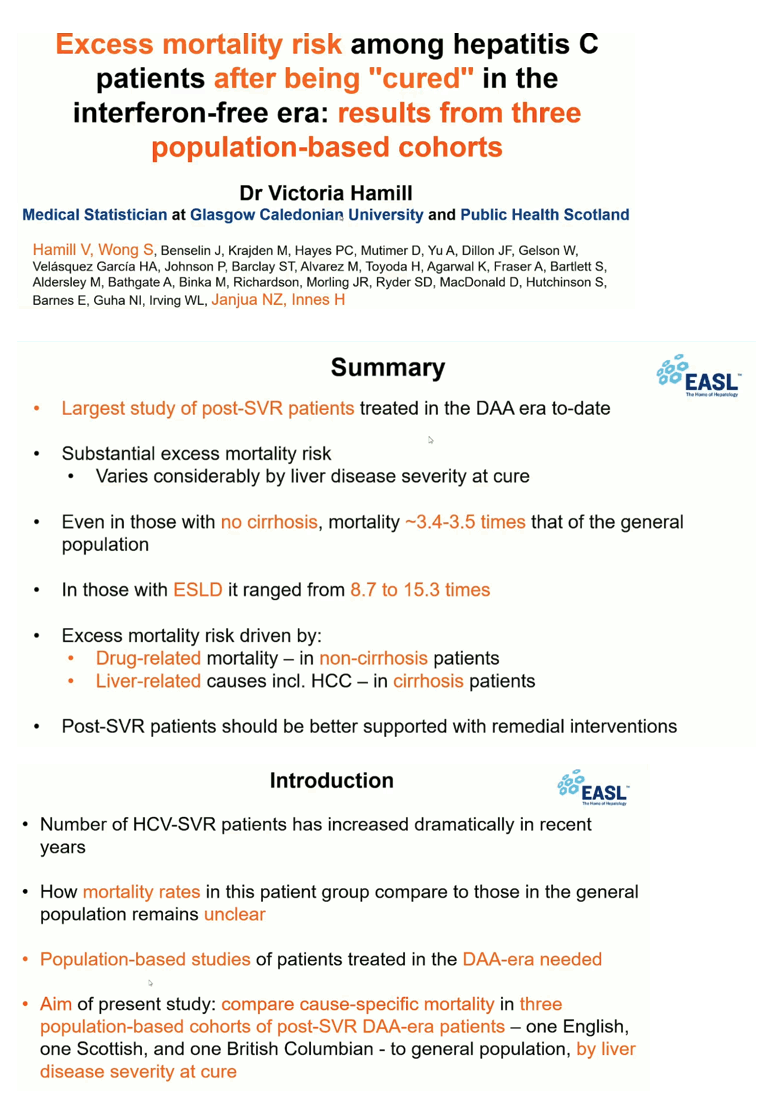
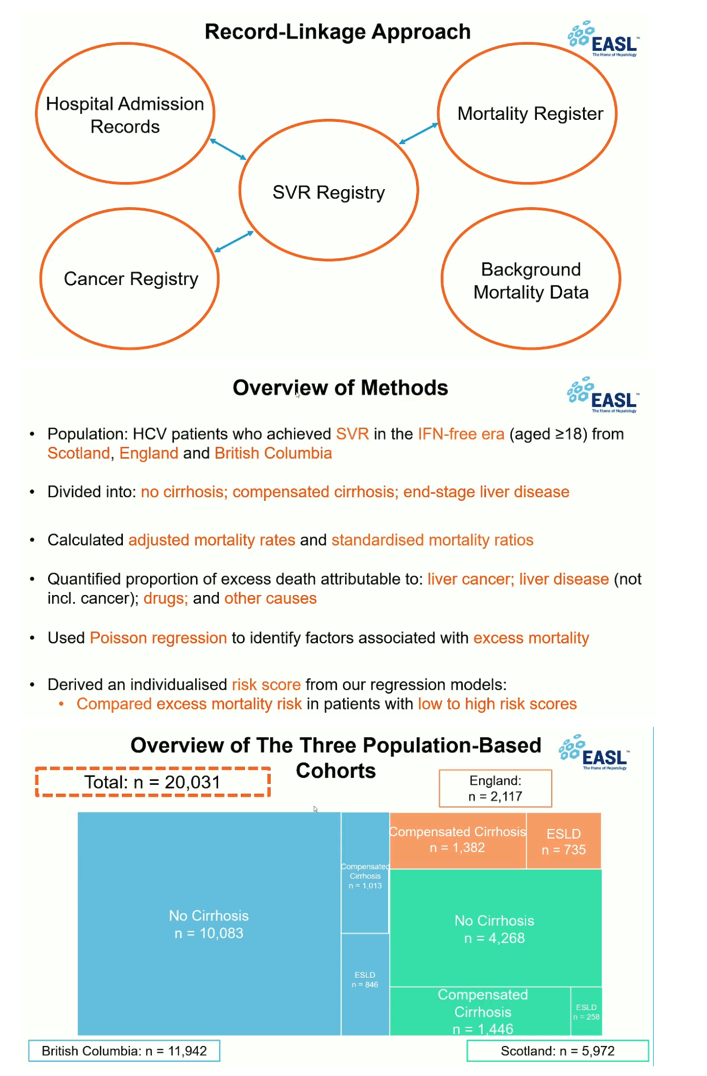
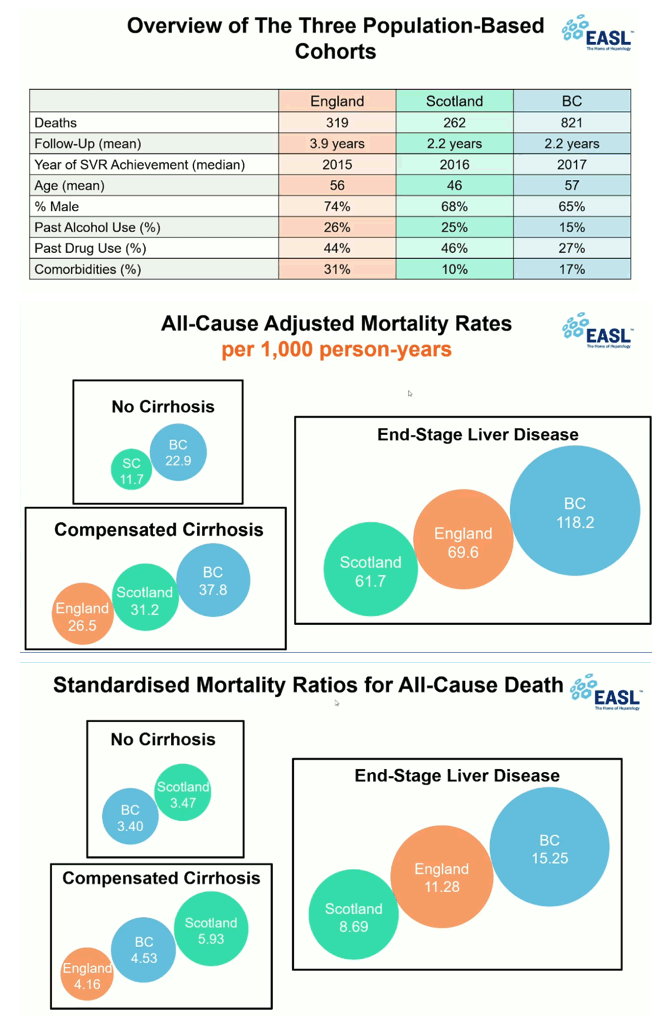
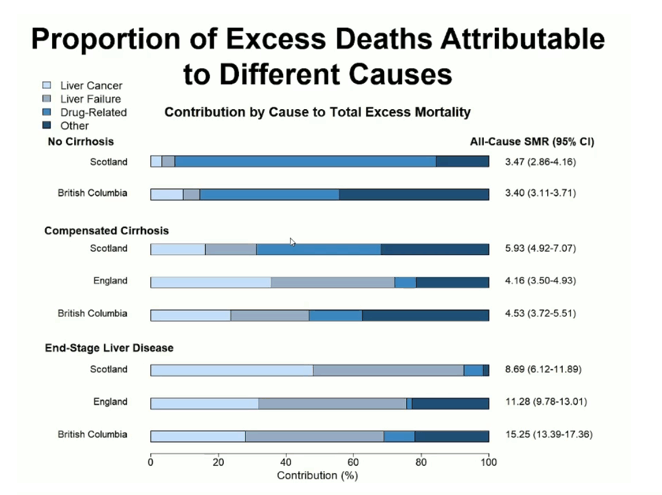
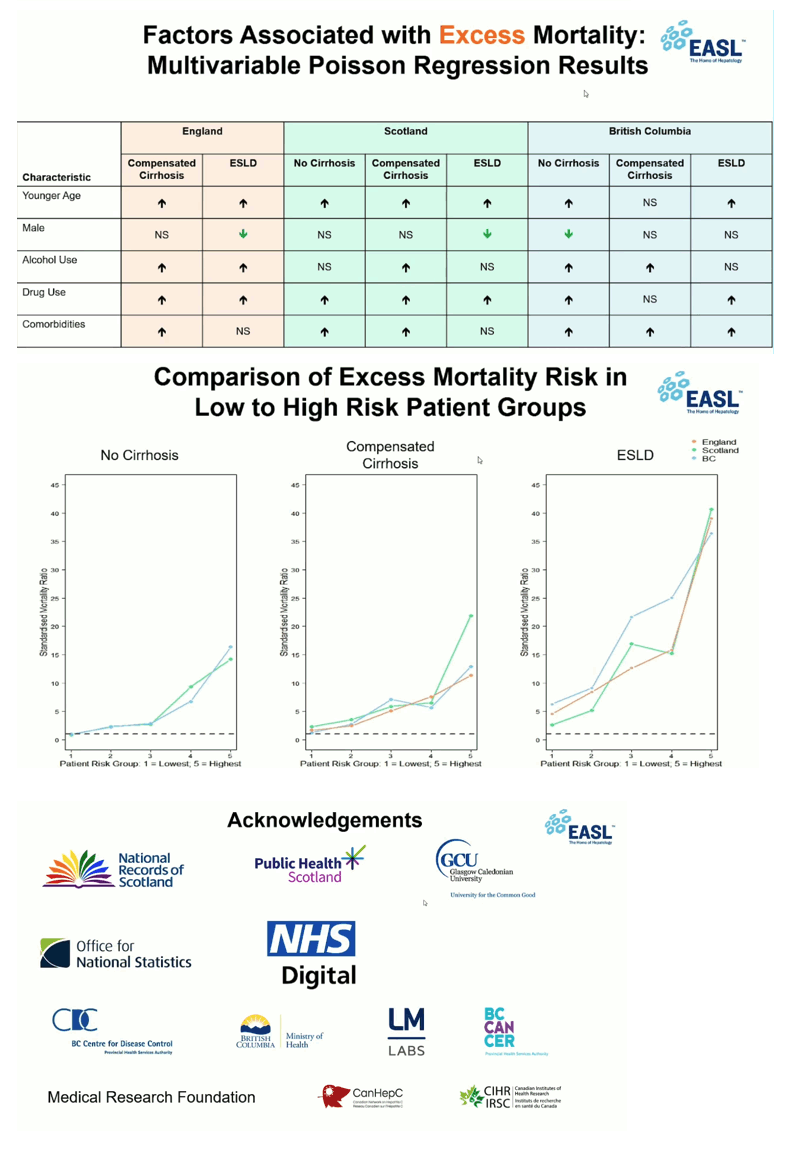
|
| |
|
 |
 |
|
|